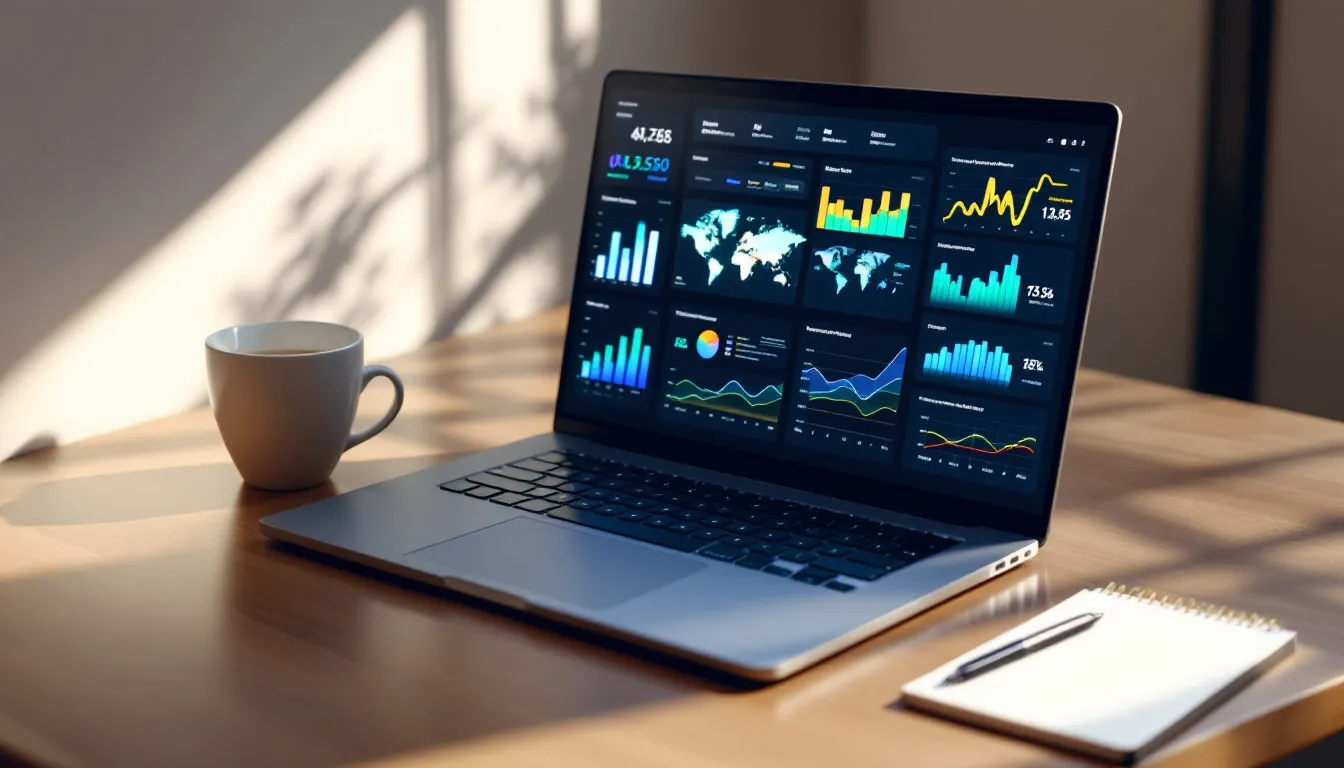If you’re trying to decide between SEO and Paid Ads, here’s a quick breakdown:
- SEO: Builds long-term organic traffic by improving your website's visibility in search results. It’s cost-effective over time but takes 4–12 months to see results.
- Paid Ads: Offers immediate visibility and works well for time-sensitive campaigns. However, it requires ongoing spending to maintain results.
Quick Comparison
| Feature | SEO | Paid Ads |
|---|---|---|
| Time to Results | 4–12 months | Immediate |
| Cost | Upfront investment, lower over time | Ongoing pay-per-click costs |
| Traffic Quality | 94% of clicks prefer organic | Visitors convert 2x more |
| Trust Factor | High (organic results) | Lower (users trust organic more) |
| Maintenance | Regular updates | Constant budget management |
Key Takeaway:
- Use SEO for long-term growth and brand credibility.
- Use Paid Ads for quick wins and precise targeting.
- Combining both can maximize results.
Benefits and Limitations
SEO: What Works and What Doesn't
SEO is a budget-friendly way to drive traffic. On average, its clicks cost 50–80% less than paid search, and it accounts for over 51% of site traffic. Regular SEO efforts, like consistently updating blogs, can increase visitors by 57% and generate 67% more leads. However, it’s not without its hurdles. Results typically take 4 to 12 months to materialize, and only 19% of new pages make it to the top 10 positions within their first year. Additionally, Google's algorithm changes mean ongoing updates are necessary, and tracking ROI can be more complex compared to paid ads.
Paid Ads: What Works and What Doesn't
Paid advertising is ideal for businesses looking for immediate results. It offers precise targeting and instant visibility, making it perfect for time-sensitive campaigns or launching new products.
"The first two weeks of a campaign are always higher volume – then they degrade and hit a baseline over time."
– Colin White, Head of Demand Gen, Clearbit
This highlights the dual nature of paid ads - they deliver quick results but come with challenges. Paid ads provide immediate traffic, detailed targeting, and clear performance metrics, making ROI easy to measure. However, they require ongoing investment, can lead to ad fatigue, and often face trust issues - 72% of users prefer organic search results.
Here’s a quick comparison between SEO and paid ads:
| Aspect | SEO | Paid Ads |
|---|---|---|
| Initial Results | 4–12 months | Immediate |
| Long-term Cost | Decreases over time | Requires continuous spending |
| Trust Factor | High (organic results get ~94% of clicks) | Lower (skepticism toward ads) |
| Traffic Stability | Consistent after ranking | Varies with budget |
| Measurement Ease | Complex to track | Clear ROI and metrics |
| Resource Requirements | Content creation, technical optimization | Budget, campaign management |
| Competitive Edge | Builds authority over time | Instant visibility in competitive spaces |
"The far-reaching advantages of SEO, from increased visibility to future-proofed marketing, make it an essential long-term investment for any serious brand."
– Chris Kirksey, CEO of Direction.com
Ultimately, success lies in balancing these methods. Many businesses use paid ads for quick wins while relying on SEO for sustained growth.
Budget and Returns
SEO Investment and Returns
The cost of SEO varies depending on the size and goals of a business. Small businesses often spend between $500 and $1,000 per month, while larger companies may allocate $2,500 to $5,000 or more monthly. Hourly rates for SEO services typically range from $51 to $100, with project fees falling between $500 and $7,500.
"When you factor in how many people use search engines on a daily basis and the fact that there is no upper limit to how much traffic your website can earn, SEO makes sense as a marketing channel for businesses to prioritize. You're not stuck paying per visit or impression with SEO."
- Trevin, VP of Marketing, WebFX
Consider this: A health insurance provider ranked first on Google for "health insurance" gained 50,000 monthly clicks. Out of these, 1,500 clicks turned into new customers, each generating $1,333 in monthly revenue. This added up to around $2 million in monthly revenue - or $24 million annually.
Paid advertising, on the other hand, follows a different pricing model.
Paid Ads Spending and Returns
Pay-per-click (PPC) budgets can range widely, from as little as $100 to as much as $10,000 per month. For example, WordStream reports that some of its customers spend an average of $9,813 monthly on PPC campaigns. Costs per click (CPC) also vary by platform: Google Search Network averages $2.32, Google Display Network $0.58, and Facebook Ads $1.72.
Costs differ across industries as well:
| Industry | Search Network CPC | Display Network CPC |
|---|---|---|
| Legal | $5.88 | $0.60 |
| Consumer Services | $3.77 | $0.69 |
| Finance & Insurance | $3.72 | $0.72 |
| Health & Medical | $3.17 | $0.37 |
| E-Commerce | $0.88 | $0.29 |
Short-term vs. Long-term Money Impact
When comparing SEO and paid ads, it's important to think about their long-term financial effects. SEO often requires a larger upfront investment, but its benefits grow over time, reducing costs in the long run. Paid ads, on the other hand, need constant funding to maintain visibility. Some businesses even redirect 50% to 100% of their PPC budget into SEO for a more balanced approach.
SEO also delivers higher conversion rates. Inbound leads from SEO convert at 14.6%, compared to just 1.7% for outbound methods like cold calls. Experts suggest allocating at least 25% of your PPC budget to SEO for better results. Local SEO campaigns typically start at around $500 per month, while national or international efforts can cost over $5,000 monthly. For enterprise-level SEO, budgets may reach $10,000 to $15,000 or more per month.
Picking Your Marketing Method
Decision Points
Now that you have an understanding of budget and ROI, it's time to choose the marketing method that aligns with your business needs. Consider your timeline, budget, market position, and competition. Here's a key takeaway: organic search accounts for 53.3% of traffic, but paid visitors convert at double the rate. You'll also want to factor in industry competition and keyword costs when making your decision.
| Quick Decision Guide | SEO Focus | Paid Ads Focus |
|---|---|---|
| Timeline | At least 6 months to see results | Need results immediately |
| Budget Type | Higher upfront investment | Ongoing monthly ad spend |
| Market Position | Building long-term authority | Rapid entry into the market |
| Competition | Targeting low-competition keywords | Competing in high-cost keyword spaces |
| Goals | Establishing brand presence | Driving direct responses quickly |
When SEO Works Best
SEO is ideal for businesses focused on long-term growth and building a strong brand presence. It's particularly effective for content-heavy industries like education platforms, thought leadership in specific sectors, or professional services. For example, real estate businesses see a 1,389% ROI over three years using SEO. This strategy is all about investing time and effort into creating high-quality content that builds authority over time.
When Paid Ads Are the Right Choice
Paid ads are perfect for campaigns that need immediate visibility. They shine in scenarios like product launches, seasonal sales, or event promotions. Consider this: 65% of high-intent searches result in ad clicks, and the top three PPC ads grab 46% of all clicks. Plus, paid traffic converts 50% better than organic traffic. If speed and precision are your priorities, paid ads are the way to go.
Combining SEO and Paid Ads
For the best results, consider using both SEO and PPC together. This approach lets you capture quick wins while building a foundation for long-term success. Use PPC data to pinpoint high-performing keywords for SEO, run ads to maintain visibility while your organic rankings grow, and tailor each method to different stages of the buyer's journey.
"Use Paid Ads for quick wins and SEO for sustainable growth. A hybrid approach always wins!" - Vikram Rathore, Digital Marketing Manager
sbb-itb-645e3f7
SEO vs PPC: Which Is Better for your Business?
Marketing Tools and Platforms
Using the right tools can make a big difference when it comes to improving SEO and running effective paid ad campaigns.
SEO Software Options

SEO tools are essential for improving organic search results. Below are some key categories of SEO tools and what they’re best used for:
| Tool Category | Key Features | Best For |
|---|---|---|
| Keyword Research | Tracks search volume, analyzes competitors, evaluates keyword difficulty | Planning content and finding opportunities |
| Technical SEO | Crawls websites, analyzes speed, optimizes for mobile | Improving website performance |
| Content Optimization | Offers on-page analysis, readability scores, semantic suggestions | Creating better, more effective content |
| Rank Tracking | Monitors SERP positions, local rankings, mobile vs. desktop | Measuring overall performance |
Many modern SEO platforms now use AI to identify content gaps, suggest improvements, and even create optimized outlines for you.
Pair your SEO efforts with strong paid ad tools to achieve quick and targeted visibility.
Paid Ad Platforms
While SEO focuses on organic growth, paid ad platforms help you target specific audiences with precision. Here are some major platforms to consider:
-
Google Ads
- Search network for targeting high-intent keywords
- Display network for visual branding
- YouTube ads for video campaigns
- Performance Max for reaching audiences across multiple channels
-
Social Media Advertising
- Facebook/Instagram Ads for targeting specific demographics
- LinkedIn Ads for B2B campaigns
- Twitter Ads for engaging in real-time conversations
- TikTok Ads for connecting with younger audiences
Performance Tracking Tools
To measure the success of both SEO and paid campaigns, you’ll need reliable analytics tools. Here are some options:
-
Analytics Tools
- Google Analytics 4: Tracks user behavior across platforms
- Google Search Console: Offers insights into organic search performance
- Google Tag Manager: Helps monitor conversions
-
Specialized Tracking Solutions
- Heat mapping tools: Understand how users interact with your site
- A/B testing platforms: Fine-tune campaigns for better results
- Attribution modeling software: Analyze the full customer journey
Conclusion: Next Steps
Main Points Review
Deciding between SEO and paid advertising depends entirely on your specific needs and circumstances. The stats back this up: 90% of business owners see Google Ads as effective, while 87% also acknowledge the power of SEO.
Here’s a quick breakdown of when each strategy shines:
SEO Benefits:
- Works well with tight profit margins, delivering 40–60% higher conversion rates than paid search.
- A smart choice for long-term growth, driving 75% of traffic while using only 5% of the marketing budget.
- Builds sustainable traffic, though results typically take 3–6 months to appear.
Paid Ads Benefits:
- Perfect for time-sensitive campaigns, offering instant visibility and results.
- Ideal for launching new products or entering new markets.
- Delivers proven returns, with an average of $2 revenue for every $1 spent on Google Ads.
A real-world example? A financial services company saw impressive results by blending both strategies:
- An 84% boost in SEO traffic
- A 28% drop in customer acquisition costs
- A 43% jump in lead generation
When deciding your approach, consider these factors:
- Your current position in the market
- How much budget you can maintain over time
- Your timeline for results
- The lifetime value of your customers
"Building a content practice over months and years, then benefiting from your experience, your back catalog, and the habit of creation is a beautiful thing." - Rand Fishkin, Sparktoro


